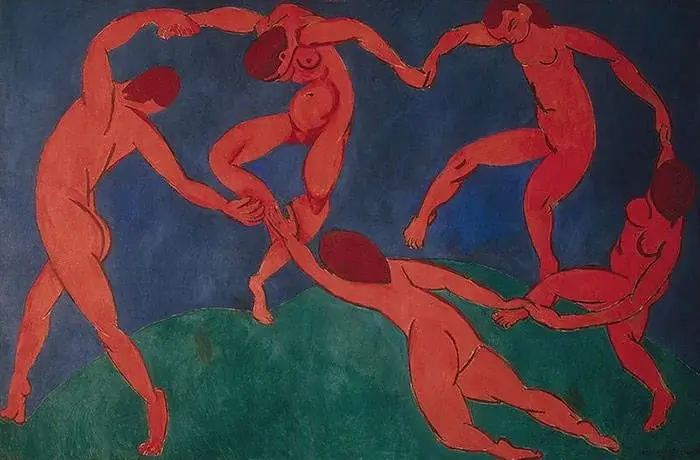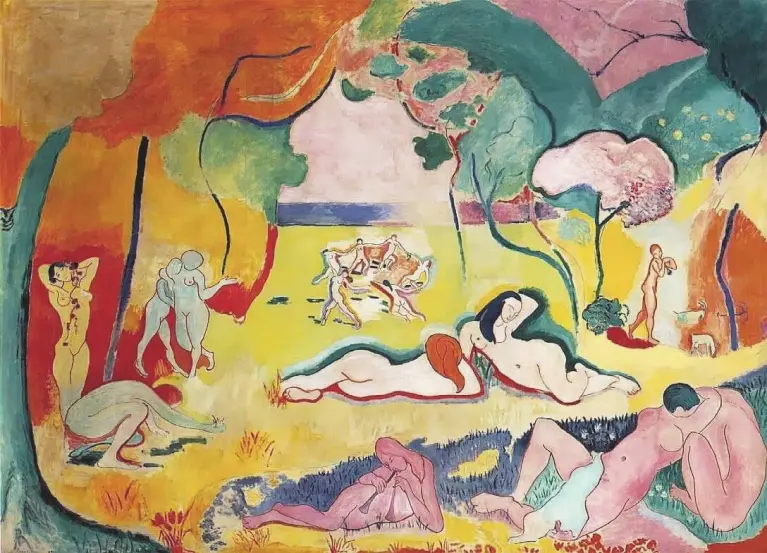Henri Matisse produced a large number of masterpieces. The French artist, who was born in 1869, developed a distinct and instantly recognizable style. The colors and angles of Matisse’s paintings are unique and inventive, and they are enchantingly calming. He is now regarded as the founder of the Fauvism movement, which emphasizes the combination of vibrant colors. Undoubtedly, he is still one of the most well-known artists from the 20th century. Learn more about Matisse with 6 of his masterpieces.
1. The Red Studio, 1911
The Red Studio of Matisse stands alone as a tiny museum. The artist plays with the idea of art in art in this piece by showing us not just a picture of his studio but also several other pieces he created. Matisse, like many artists, is not averse to layering several hues on top of one another. Like usual, he also experiments with the three-dimensional viewpoints of the items he portrays.
2. Luxe, Calme et Volupté, 1904
You should be familiar with Luxe, Calme et Volupté (Luxury, Calm and Pleasure in English), which is regarded as one of the very first examples of Fauvism. Its name is derived from a Charles Baudelaire poem from 1857 called Invitation to the Voyage, which you may be familiar with. The poem’s themes—escape to a calm and imaginary paradise—are portrayed in this Matisse picture. Knowing that Matisse was inspired by Paul Cézanne’s Three Bathers in this instance is not surprising. Matisse tried to convey a sense of serenity via his artwork, and you can see it in this picture in the colors and the carefree expressions of the figures that mix in with the reflections of the sun on the beach.
3. The Dance, 1909-1910
Matisse broke away from the conventional depiction of dancing bodies in The Dance. Matisse primarily conveys energy through the use of his signature simple colors, including the energy of joy, music, and nature. Like many Matisse paintings, this work doesn’t follow any rules of perspective or relief; the scene is flat, and only the moving figures matter.
4. Open Window, Collioure, 1905
Open Window by Matisse is a blatant example of the Fauvist movement. One of the artist’s favorite locations, Collioure, is presented in a fresh way by the vibrant hues. One may see Matisse’s fascination in pointillism in this piece. Thus, rather from being a true picture of the location, the view presented by Matisse’s paintings is a tribute to color (which he utilizes here in its purest, unadulterated form).
5. Joy of Life, 1905
This imagining of a perfect location evokes Luxe, Calme, and Volupté. The background is based on a Collioure scene, and the figures are reminiscent of the Orientalism that Matisse was so attracted with after visiting Morocco for years. Although the piece is harmonious as a whole, each component seems to stand alone.
6. Woman With a Hat, 1905
Another well-known example of Matisse’s Fauvism is the Woman With a Hat, however this piece surprised the public more than the others. First, Fauvism was still regarded as a barbaric trend in the 20th century, despite the fact that the subject of the piece is the artist’s wife. Then, as one of the earliest pieces from this trend, it was criticized and received little acclaim when it was displayed in 1905 at the Salon d’Automne. It was called a “pot of colors hurled in the face of the public.”








